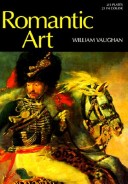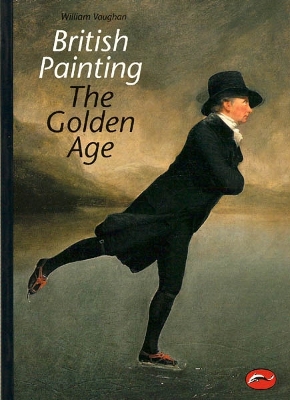World of Art
3 total works
In the age of revolutions, at the end of the eighteenth century, the mental and spiritual life of North America and Europe began to undergo an historic and irreversible change. The ideas of spontaneity, direct expression and natural feeling transformed the arts, encouraging artists to explore the extremes in human nature, from heroism to insanity and despair.
Widely praised on first publication and now revised, William Vaughan's classic study analyses the achievement of the leading artists of the day - masters such as Goya, Blake, Gericault, Turner and Delacroix - and sets in context a host of fascinating figures in painting, sculpture and architecture: Palmer, Runge, Soane, Gros, Overbeck, Schinkel, Flaxman, Pugin, Bingham and many more.
Widely praised on first publication and now revised, William Vaughan's classic study analyses the achievement of the leading artists of the day - masters such as Goya, Blake, Gericault, Turner and Delacroix - and sets in context a host of fascinating figures in painting, sculpture and architecture: Palmer, Runge, Soane, Gros, Overbeck, Schinkel, Flaxman, Pugin, Bingham and many more.
The period from the early works of Hogarth (about 1730) to the death of Turner (1851) was the golden age of British painting, bringing it into the forefront of European art. The main figures are Hogarth, Ramsay, Reynolds, Gainsborough and Lawrence, Blake, Constable and Turner. William Vaughan discusses the key personalities and analyses the class structure, political background, including the effects of the Napoleonic Wars, and economic factors that governed the art market.
Gainsborough is one of the most appealing artists of the eighteenth century. Renowned for such elegant portraits as The Blue Boy and Countess Howe, he also pioneered a new form of landscape with a moody sensibility that prefigured the Romantic movement. He was a brilliant draftsman, and his art is full of inventiveness and visual delight.
William Vaughan draws on recently discovered material to provide a fresh perspective on both the life and art of this master. He shows how closely Gainsborough’s innovative manner can be connected to social and political developments in Britain, in particular the celebration of original genius in a time of burgeoning entrepreneurial commercialism. Above all, he demonstrates how, beneath the artist’s charm, there lay a bedrock of shrewd observation and pictorial intelligence that gives his work a value for all time.
William Vaughan draws on recently discovered material to provide a fresh perspective on both the life and art of this master. He shows how closely Gainsborough’s innovative manner can be connected to social and political developments in Britain, in particular the celebration of original genius in a time of burgeoning entrepreneurial commercialism. Above all, he demonstrates how, beneath the artist’s charm, there lay a bedrock of shrewd observation and pictorial intelligence that gives his work a value for all time.


